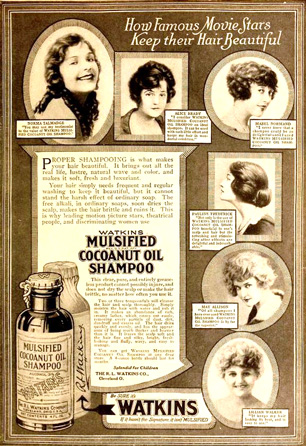Monochloroacetic Acid (Chloroacetic Acid)
| EPA Maximum Contaminant Level Goal (MCLG) |
0.07 mg/L |

MCAA is an ingredient in some shampoos.
Monochloroacetic Acid (also known as MCAA or Chloroacetic Acid) is a chemical used in the research and medical industries, in communications equipment, automotive and herbicide manufacturing, and in cosmetics like shampoos. The EPA also lists the production of “flavors” as one of its many uses.
MCAA is a haloacetic acid (one of the EPA regulated HAA5) that can form as a byproduct of water chlorination or chloramination.
Health Effects of Monochloroacetic Acid
According to the EPA, monochloroacetic acid can lead to an increased acidity in bodily fluids, affecting the heart, central nervous and muscular systems:
The systemic toxicity of MCAA is caused by inhibition of enzymes of the glycolytic pathway and the tricarboxylic acid cycle. This metabolic blockage damages organs with a high-energy demand, such as heart, central nervous system (CNS), and muscles, and leads to metabolic acidosis due to the accumulation of lactic acid and citric acid in the body.
Unlike similar haloacetic acids dichloroacetic acid (DCA) and trichloroacetic acid (TCA), monochloroacetic acid is not believed to be carcinogenic.
Water Treatment for Monochloroacetic Acid
There is no recommended treatment for monochloroacetic acid, although its formation during water disinfection may be prevented with pre-filtration to remove organic matter, or pH adjustment prior to treatment.
Sources: EPA, WHO, DOW Chemical, Photo: WikiMedia, author: Unknown
Site Index
Filtration Systems
- Aeration for Iron & Sulfide
- Backwashing Filters
(whole house & well units)
- Chlorine & Chemical Injectors
- Countertop Water Filters
- Garden Hose Filters
- Reverse Osmosis, Residential
- Reverse Osmosis, Commercial
- Shower Filters
- Specialty Filters
- Ultraviolet Systems
- Undersink Filters
- Water Softeners
- Whole House Filters
Cartridges
Parts
- Replacement Parts
- Faucets
- Filter Media
- Fittings
- Housings
- O-rings
- Pumps
- Pura UV
- R.O. Parts
- R.O. Tanks
- R.O. Booster Pump
- VIQUA UV